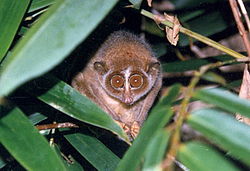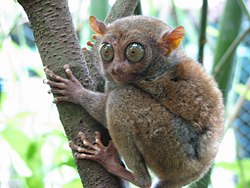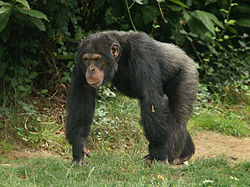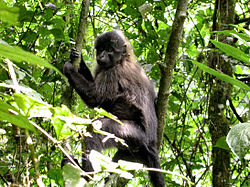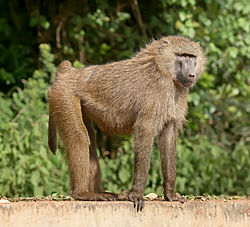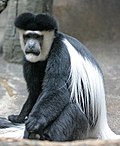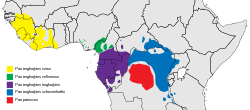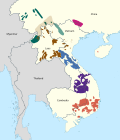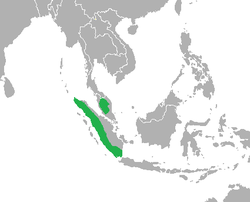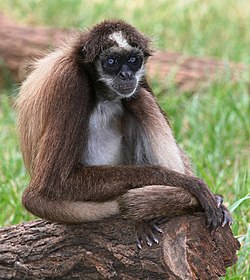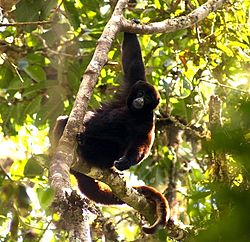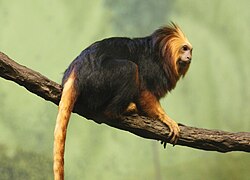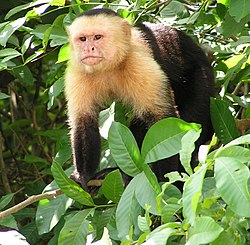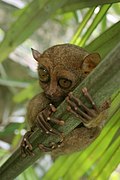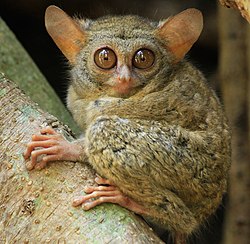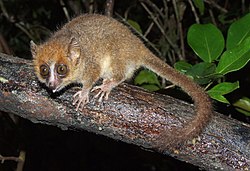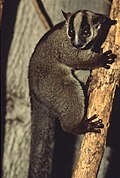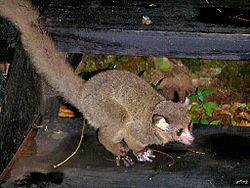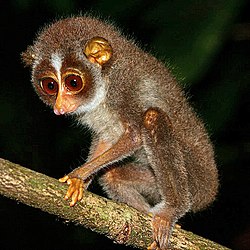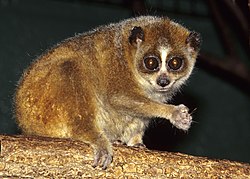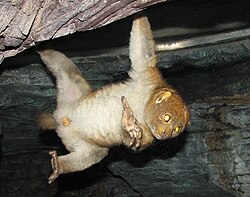
Primates is a diverse order of placental mammals which includes monkeys, lemurs, galagos, lorisids, tarsiers, and apes (including humans). Members of this order are called primates. The order currently comprises 505 extant species, which are grouped into 81 genera. The majority of primates live in South and Central America, Africa, and southern and Southeast Asia, in a variety of habitats, particularly forests but also including grasslands, savannas, shrublands, wetlands, deserts, and rocky areas. The exception is humans, which have spread worldwide to every biome. Primates come in a variety of body plans but typically feature large brains, a shoulder girdle allowing a large degree of movement in the shoulder joint, dexterous hands, and tails, sometimes prehensile. [1] They range in size from Margot Marsh's mouse lemur, at 8 cm (3 in) plus a 11 cm (4 in) tail, to the eastern gorilla, at 196 cm (77 in), not including limbs. Primates are also the most intelligent animals and non-human primates are recorded to use tools, communicate with gestures and vocalizations, and have complex social systems. [2]
Contents
Primates is divided into two suborders: Haplorrhini and Strepsirrhini. The suborders are further subdivided into clades and families. Haplorrhini contains nine families in four major clades: Cercopithecoidea, containing the Old World monkeys of the family Cercopithecidae; Hominoidea, containing the great apes of the family Hominidae and the gibbons of the family Hylobatidae; Platyrrhines, or New World monkeys, divided into the families Aotidae, Atelidae, Callitrichidae, Cebidae, and Pitheciidae and containing night, howler, spider, woolly, capuchin, squirrel, and saki monkeys, marmosets, and tamarins; and Tarsiiformes, containing the tarsier family Tarsiidae. Strepsirrhini is split between two clades: Lemuroidea, divided into the families Cheirogaleidae (dwarf and mouse lemurs), Daubentoniidae (the aye-aye), Indriidae (wooly lemurs, sifakas, and indri), Lemuridae (lemurs), and Lepilemuridae (sportive lemurs); and Lorisoidea, split between the galago family Galagidae and the loris family Lorisidae. The exact organization of the species is not fixed, with many recent proposals made based on molecular phylogenetic analysis. No species have been recorded as going extinct since 1500 CE, but over 200 species, or more than 40 percent of all primates, are considered endangered or critically endangered.

